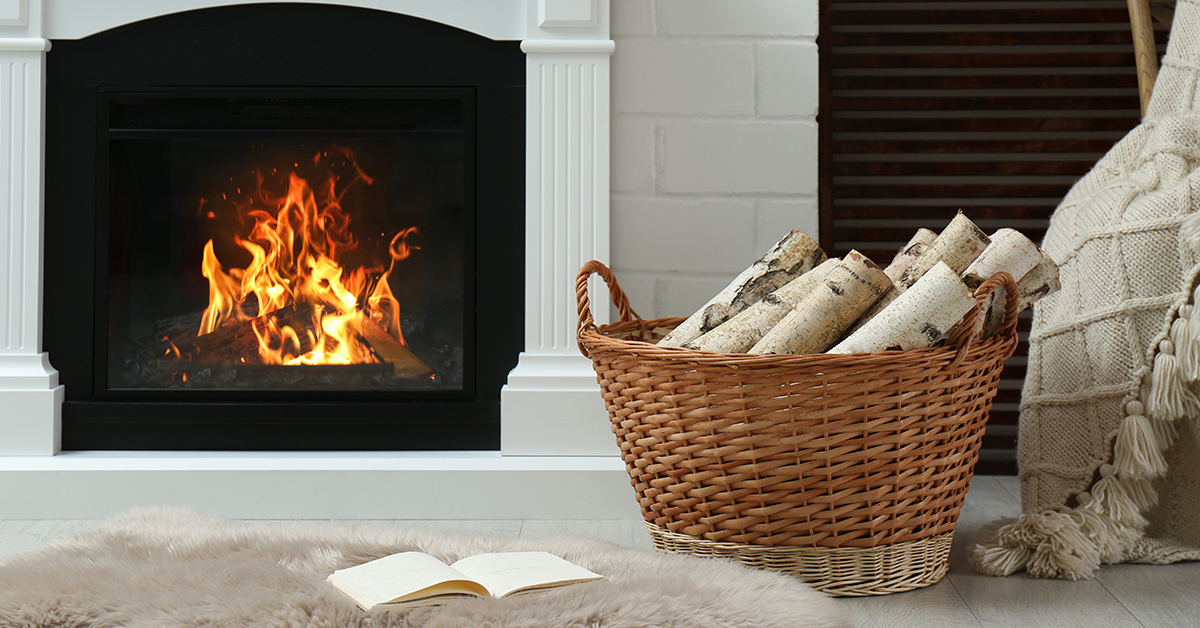Fireplace Safety Tips - NEC Coop
Nov 1, 2021 — Electrical Safety, Resources

A fireplace might add comfort and warmth during the colder months ahead, but for families, safety should always be top of mind. That crackling and cozy glow might be the source of potential issues! Ash, cinders, creosote, and resins that are not routinely cleaned can be a hazard.
Here are some fireplace safety tips to keep your home safe and warm in the upcoming months.
1. First, make sure that you choose the right type of wood. Choose well-seasoned, dried wood that burns hot so that it gives off less carbon monoxide and creosote.
2. Remember, fire and chemicals don’t mix! Refrain from using kerosene, gasoline, or charcoal starter. Never burn pressure-treated, painted, or plywood. These materials can release toxic chemicals that can harm your home.
3. Do not use rotten, wet, moldy, or diseased wood. Start fires with dry newspaper, kindling, or pine cones.
4. Check the wood’s moisture content. It is advisable that you use wood that has a moisture content of less than 20 percent and has been seasoned for at least twelve months. To be on the safe side, buy a firewood moisture meter.
5. Keep your fireplace clean. This allows for cleaner combustion and better airflow.
6. Keep a fire extinguisher handy. Did you know that one small spark can start a fire, and your family may have as little as 2 minutes to escape? It’s best to be prepared.
7. Check your chimney cap at least once a year. Make sure that it is securely attached and that the mesh covering is intact. Check the masonry for cracks too.
8. Store wood properly. To ensure that you are using wood that is properly dried, store excess wood for use the following year. However, be sure to store and stack them off the ground. Keep them covered, but make sure that you leave the sides open to encourage good airflow.
9. Choose the right wood. Different kinds of wood have diverse characteristics, so they burn differently. Softwoods, such as pine will burn really hot and very fast. Hardwoods like oak burn long and hot.
10. Use local firewood. This will help prevent neighborhood insect pests and tree diseases from spreading. For example, the emerald ash borer has killed millions of ash trees in Texas because they are used as firewood.
Be sure to get the most out of your fireplace this season with these tips on fireplace safety. This way, you will have peace of mind knowing your family – and the fireplace – are safe.
Sources:
“Best Wood-Burning Practices,” U.S. Environmental Protection Agency, https://www.epa.gov/burnwise/best-wood-burning-practices
“Overview of Wood Preservative Chemicals,” U.S. Environmental Protection Agency, https://www.epa.gov/ingredients-used-pesticide-products/overview-wood-preservative-chemicals
“Home Fire Safety,” Red Cross, https://www.redcross.org/get-help/how-to-prepare-for-emergencies/types-of-emergencies/fire.html
“Firewood: What Type Should You Use?” Bob Vila, https://www.bobvila.com/articles/firewood-types/

